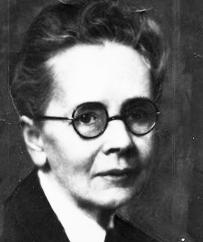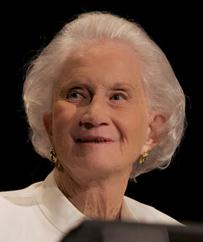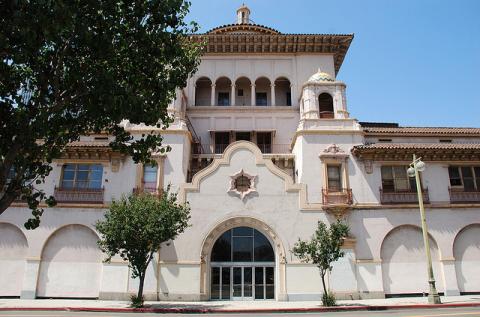The American Institute of Architects conferred its top award—the Gold Medal—posthumously to Julia Morgan in December 2013, with the ceremony taking place at the AIA National Convention last month. She became the first woman to receive the honor. Morgan (1872-1957) studied at UC Berkeley and at the Ecole des Beaux Arts in Paris, going on to create over 700 buildings—most located in California. TPR includes the following tribute to honor Morgan’s legacy.

Julia Morgan
"At a time when there were few women in the professional world, when we weren’t even allowed to vote, Julia was a real trailblazer. She paved the path, not just for women architects, but for all women. She faced many challenges in the male-dominated architecture industry. She is a living proof that no matter the obstacles, no matter the status quo, you can achieve greatness.”
—Dianne Feinstein, US Senator
“While it might be unconventional to have a posthumous mentor, Julia Morgan will always be mine. Her many firsts in the male dominated profession that architecture was and remains; her enviable productivity and successful commissions; along with her profound talent integrating architecture and technology, architecture and art, architecture and humanity—ensures her place as my mentor and my inspiration.”
—Brenda Levin, FAIA, Levin & Associates
The award ceremony honoring Julia Morgan at the 2014 AIA National Convention in Chicago featured a speech by architect Beverly Willis, FAIA. Willis led her own firm for 35 years, then established the Beverly Willis Architecture Foundation in 2002. The non-profit, based in New York City, seeks to fullfill its mission of “advancing the knowledge and recognition of women’s contributions to architecture.” TPR prints the following, a complete transcript of Willis’ address:
 Beverly Willis: It is a great honor and a historic moment to be here speaking on behalf of Julia Morgan. In 1978, as president elect of the California Council, I stood before this august body to present emotion and argue successfully that the AIA must support the equal rights of women, saying in part, “I believe that architecture is concerned about people as well as concrete and steel. Architects are committed to the concept of human service and to the social improvement of this nation. The AIA should reaffirm its moral commitment as architects to the goals and ideals of architecture and humanity.” Today, by awarding the Gold Medal to Julia Morgan, you have taken a huge step toward this goal. From my heart, and as a woman, I thank you.
Beverly Willis: It is a great honor and a historic moment to be here speaking on behalf of Julia Morgan. In 1978, as president elect of the California Council, I stood before this august body to present emotion and argue successfully that the AIA must support the equal rights of women, saying in part, “I believe that architecture is concerned about people as well as concrete and steel. Architects are committed to the concept of human service and to the social improvement of this nation. The AIA should reaffirm its moral commitment as architects to the goals and ideals of architecture and humanity.” Today, by awarding the Gold Medal to Julia Morgan, you have taken a huge step toward this goal. From my heart, and as a woman, I thank you.
Change does not come easily or quickly. Julia Morgan had the best available education in engineering and architecture and became a master builder, managing all facets of development construction—from design plans and details, to managing warehouses of material, arranging supply and delivery, resolving construction details, and developing custom-crafted decorative finishes and elements. Morgan was highly engaged in the structural art and efficiency of buildings, using the structure expressively.
She innovated the use of reinforced concrete as a stabilizing material for seismic areas—example, the Mills College Campanil—while bringing structural rationalism to a new high. After the Great San Francisco Earthquake and Fire of 1906, she was one of a small handful of architects with the skills capable of rebuilding many of the city’s monumental and commercial buildings, like Nob Hill’s Fairmont Hotel, destroyed in 1906. She was a master of exquisite detailing, like that in the Hearst office building in Los Angeles. Long before HVAC systems were invented, she demonstrated sustainable design through her climate-responsive designs that provided natural comfort in buildings.
Morgan was a contemporary of another master builder—Frank Lloyd Wright. Both trained as engineers and started their own practices at about the same time. Both embraced their regional roots and let vernacular regionalism inform their building designs. Both were fascinated by the Arts and Crafts movement. Both worked on a portfolio of 700-800 projects during their lifetimes. As each of their practices and reputations grew, both designed a variety of large commercial and cultural buildings—some of which today draw hundreds of thousands of visitors each year. Morgan’s Hearst Castle attracts as many as a million a year.
But these two great architects differed in two significant ways. The first, to state the obvious: One was a female, the other male. The second, and equally complex: Wright loved to talk and write, never hesitating to proclaim himself the world’s greatest architect. Morgan was quite the opposite. As she said, she was not a “talking architect,” nor did she leave any theoretical writings about her work. She believed that her buildings would speak for her, and to future generations. Perhaps a noble notion, but it was also a naïve one. Wright’s work became well-known. Morgan’s work remained unknown.
 Julia Morgan died in 1957. I opened my design studio in Hawaii in 1955 and moved my studio to San Francisco in 1958, missing her by a year. But more importantly, I had never heard about her. She was not in the history books or known past her death. And it would not be until 31 years later that Sara Holmes Boutelle would write the first monograph on Morgan’s work. We women who graduated in the ’50s, ’60s, ’70s, and ’80s were denied a phenomenal role model of an incredible designer and a successful practitioner.
Julia Morgan died in 1957. I opened my design studio in Hawaii in 1955 and moved my studio to San Francisco in 1958, missing her by a year. But more importantly, I had never heard about her. She was not in the history books or known past her death. And it would not be until 31 years later that Sara Holmes Boutelle would write the first monograph on Morgan’s work. We women who graduated in the ’50s, ’60s, ’70s, and ’80s were denied a phenomenal role model of an incredible designer and a successful practitioner.
Would you believe that as recently as 1978, when we were discussing the Equal Rights Amendment, the president of the AIA declared to the press that he would never hire a woman architect? On behalf of these women practitioners, I express our collective and respectful anger.
Historically important women designers are still not in the history books. But conversely, at this moment, on this day, in the history of AIA, I express our collective joy. In conclusion, I return to my words from 36 years ago: The AIA must reaffirm its moral commitment as architects to the goals and ideals of architecture and humanity. With the award of this Gold Medal to Julia Morgan today, which her family proudly accepts, the AIA has indeed reaffirmed its commitment as architects to its democratic ideals. This is a proud moment for us all.
(Photos courtesy of aia.org/MattMartin.tvFloyd B. Bariscale, respectively)
- Log in to post comments



